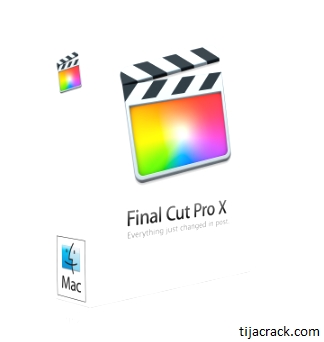| Version | 10(as of 5/7/2021) |
| Platform | Mac |
| License | Bundled |
| Category | Utility |
Basically, older Mac OS X CD's have two main partitions. One with the main install (HFS+) and another one with Boot Camp drivers for Windows (FAT32 or just a standard CD format). If you look in the ISO or DMG in the archive.org explorer, it can't read HFS+, only the standard, FAT32 or CD format. Click on Archive. From here, you can dive deeper into the folder tree until you see a folder named Messages. This is where macOS stores.emix copes of your emails in Archive. There may be formatting or image issues, particularly if the content is web-based. But these are locally stored copies of your email messages. Basically, older Mac OS X CD's have two main partitions. One with the main install (HFS+) and another one with Boot Camp drivers for Windows (FAT32 or just a standard CD format). If you look in the ISO or DMG in the archive.org explorer, it can't read HFS+, only the standard, FAT32 or CD format. If you want to compress a file, a folder, or a group of items, select it/them, then right click and choose Compress item name. Archive Utility launches, compresses the item (s), and then it quits. The same is the case if you receive a.zip archive and want to expand it; just double-click the archive. Archive Utility opens, decompresses the. Download 7-Zip for MacOS. 7Zip is a great app that should be included on iTunes.As productivity is a concern on all Apple devices, the development of 7Zip would be a great delight for all its users.

Main Features
- Extract files from Zip, bzip2, tar, cbz, gz, cpio, and cpgz archives
- Package files into Zip, cpio, and cpgz archives
- Customize how files are extracted and archived
Software Overview
Apple Archive Utility is a macOS application that allows users to create and expand archives, such as .ZIP files. It is bundled with macOS and is the default tool macOS uses to handle archives.
Archive Utility can package users' files into Zip, CPIO, or CPGZ archives. It allows users to expand archives that use the Zip, CPIO, CPGZ, bzip2, cbz, tar, gz, jar, tgz, tbz, compress, and uuencode archive formats.

To create an archive using Archive Utility, users simply select all the files they want to package into an archive, right-click one of the files, and then select Compress. To expand an archive using Archive Utility, users simply double-click the archive. (In some cases, you may have to rename the archive to use the .zip extension or another supported extension.)
Advanced users can customize Archive Utility's archiving and expanding processes. The utility allows you to choose where to save expanded files, what to do with archives after expanding them, where to save archives, and what to do with archives after creating them. Users who want to customize Archive Utility's settings can find the app in the Macintosh HD/System/Library/CoreServices/Applications directory.
Summary
Apple Archive Utility Download
For most macOS users, Apple Archive Utility will be the only tool they need to create and expand archives. It is built into the macOS operating system, supports most popular archive formats, and even allows you to customize the archiving and expansion process.
Primary File Type
.ZIPZipped FileSupported File Types
| Extension | File Type |
|---|---|
| .ZIP | Zipped File |
| .BZ | Bzip Compressed File |
| .BZ2 | Bzip2 Compressed File |
| .BZIP2 | Bzip2 Compressed Archive |
| .CPGZ | Compressed CPIO Archive |
| .CPIO | Unix CPIO Archive |
| .GZ | Gnu Zipped Archive |
| .HQX | BinHex 4.0 Encoded File |
| .PAX | PAX Archive |
| .TAR | Consolidated Unix File Archive |
| .TBZ | Bzip Compressed Tar Archive |
| .TBZ2 | Tar BZip 2 Compressed File |
| .TGZ | Gzipped Tar File |
| .TXZ | XZ Compressed Tar Archive |
| .UU | Uuencoded File |
| .XIP | macOS Signed Archive |
| .XZ | XZ Compressed Archive |
| .Z | Unix Compressed File |
| ||||||||||||||||||||||||||||||||||||||||||||||||||||||||||||||||||||
| File Description | DEB is the filename extension of the standard Debian software package. It usually contains two archives optionally compressed with gzip, Bzip2, lzma, or xz (lzma2) - one for the package control information and another for the real package data. The default program for handling these DEB files is dpkg, most commonly via other programs such as apt/aptitude. But you can also unarchive DEB files with the following programs. | |||||||||||||||||||||||||||||||||||||||||||||||||||||||||||||||||||
| How to Open .DEB Files |
| |||||||||||||||||||||||||||||||||||||||||||||||||||||||||||||||||||
| DEB Programs | ||||||||||||||||||||||||||||||||||||||||||||||||||||||||||||||||||||
| DEB Topics | File Extensions DEB Frequently Asked Questions None. | |||||||||||||||||||||||||||||||||||||||||||||||||||||||||||||||||||
| Related Books | The Data Compression Book (Amazon) | |||||||||||||||||||||||||||||||||||||||||||||||||||||||||||||||||||
| Source | - Official File Extension Library | |||||||||||||||||||||||||||||||||||||||||||||||||||||||||||||||||||
Apple Archive Utility

How to select a program to open DEB files? | |
When you double click DEB files on computer, the associated program will be launched to open the selected DEB file. But you can change it to any program at your pleasure. a) Select a program to open DEB files on WindowsRight-click on the DEB file and go through 'Open with' > 'Choose default program'. In the pop-up windows, choose a program as the DEB file opener. If you decide to always open DEB files with the program, only check the option 'Always use the selected program to open this kind of file'. b) Select another application to open DEB files on MacFirst Get Info about any one of DEB files by right-clicking or Command-I, and click 'Open with' arrow to choose a program to start your DEB file. Click 'Change All' button to set the selected application as the default DEB file opener app. |